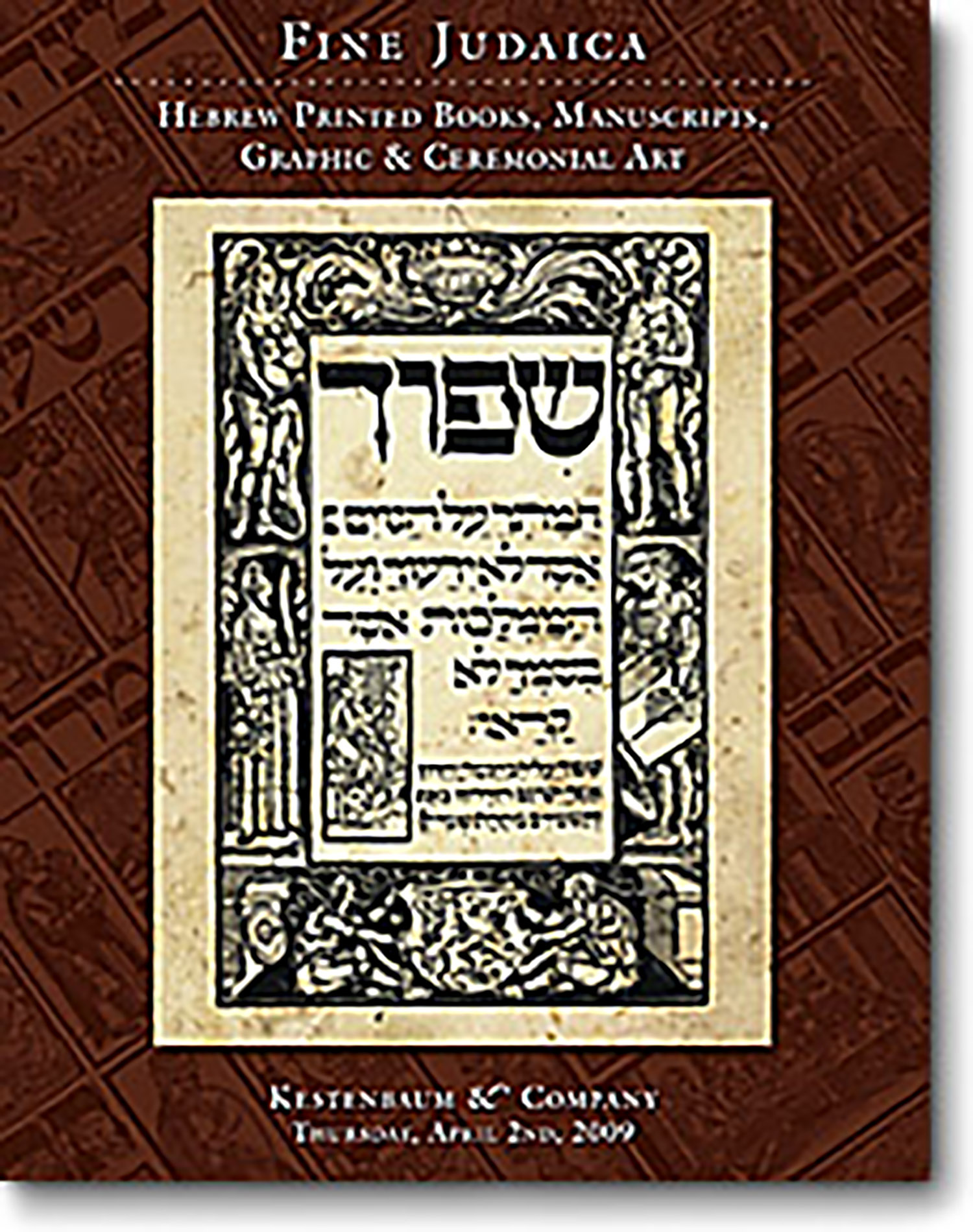(KABBALAH)

AUCTION 43 |
Thursday, April 02nd,
2009 at 1:00
Fine Judaica: Hebrew Printed Books, Manuscripts, Graphic & Ceremonial Art
Lot 280
(KABBALAH)
Livorno: 18th century
Est: $4,000 - $6,000
The dissemination of the Kabbalistic teachings of R. Isaac Luria (AR”I) follows a convoluted route. The versions recorded by his disciple, R. Chaim Vital are reputedly the most authoritative. However, different versions exist of Vital’s writings as well as recensions by other disciples.
Although this manuscript cites Vital (some of the commentaries cited are almost identical to the version found in Sha’ar Ma’amrei Rashb”i of the “Eight Gates” of R. Chaim Vital), ample use was also made of the writings, versions and arrangements of other disciples. For example, the lengthy commentary found in our ms. ff.44-46 (explaining f.15 of the Zohar), is the commentary attributed by the scholar Yosef Avivi to R. Joseph ibn Tabul (in the name of the Ari). (See Avivi's recently published three-volume magnum opus, Kabbalath Ha'Ari (2008), Vol. II, pp. 1024-27). Avivi states (Vol. I, p. 172) that he published the "full" text of this important commentary based upon various manuscripts as compared to the first published version (in R. Shalom Buzaglo, Hadrath Melech [Amsterdam,1766]). It should be emphasized however, that the version of our manuscript contains many interesting variants, added words and often entire lines of additional text. These greatly enhance and clarify this fundamental passage.
The Scribe: Emanuel Sinigalia, written for HaChacham Rokeach. The Sinigalia or Sinigaglia family were an important scholarly Italian family whose members were Rabbis of Modena in the 18th century (see JE, Vol. XI, pp. 385-86). Our scribe seems to have been a kabbalistic scholar in his own right, as he makes many emendations in parentheses in accordance with his own understanding (Nir'eh li she-tzarich lomar...) In his final comment to the above passage, the scribe writes "ad kan matzathi kathuv, ve-nir'eh li she-hu me-ha-eloki R. Yitzchak Aschkenazi, zichrono lechayei ha-olam ha-ba."
This important manuscript (unknown to Avivi) deserves to be studied carefully and compared to other versions of the writings of the Ari in order to truly appreciate its significance.
